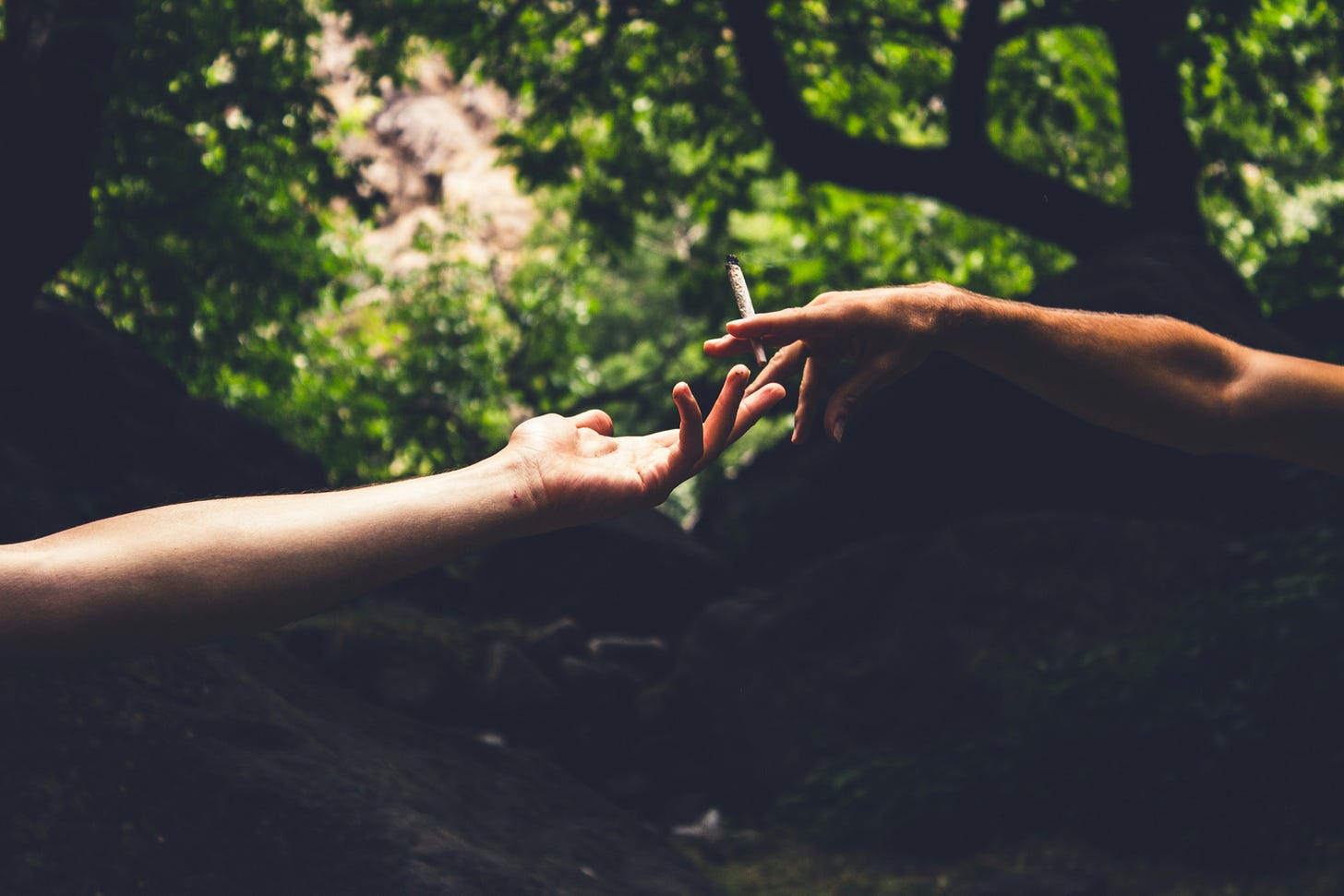For the First Time Ever, Cannabis was Discovered in the Bones of 17th Century Italian People
A middle aged woman and teen boy both had evidence of cannabis in their bones
Hiya!
Cannabis, both medicinal and recreational, is becoming increasingly accepted in modern society. In response to popular demand, a growing number of States are legalizing the drug. As of January 2024, medical marijuana is legal in 38 states and the District of Columbia (D.C.), and recreational marijuana is legal in 24 states and D.C.
But we Humans have dabbled with cannabis for at least 12,000 years. Researchers have identified evidence of cannabis crops and remnants of cannabis seeds and mentions of it in ancient documents. But now, for the first time, we have direct proof that ancient humans consumed cannabis because scientists discovered it in the bones of 17th-century remains.
The Study
Gaia Giordano, a biologist and doctoral student at the University of Milan’s Laboratory of Forensic Anthropology and Odontology and Laboratory of Toxicological Investigation, along with her colleagues, collected femoral (thigh) bone samples from nine human remains in a crypt located beneath a church next to the distinguished Ca’ Granda Hospital in Milan, Italy.
Using radiocarbon dating, the team confirmed the bones came from people who lived in the 1600s. The team then ground the bones into a fine powder and prepared the samples for a toxicology analysis by separating and purifying individual chemical compounds in a liquid solution.
The toxicology report identified the presence of both Delta-9-tetrahydrocannabinol (Delta9-THC) and cannabidiol (CBD) molecules in the bones of two out of the nine samples. Delta9-THC produces the psychological effects cannabis is known for, while CBD is a non-psychoactive compound known for its medicinal properties.
Once cannabis is consumed, it is absorbed by the bloodstream and travels through blood vessels, including those in bone tissue, which is where the molecules can become trapped and preserved. This seems to have happened for a female between 45 and 54 years old and a male between 16 and 20 years old — both of whom were buried between 1638 and 1697. Giordano, who is also the study’s author, explains:
“We know that cannabis has been used in the past, but this is the first study ever to find traces of it in human bones. This is an important finding, because there are very few laboratories that can examine bones to find traces of drugs.”
But the lab in Milan can, and the team published their findings in the Journal of Archaeological Science in December 2023.
Medicinal or Recreational Use?
It’s super cool we’ve advanced enough that scientists can conduct toxicology reports on ancient remains and that the team found evidence of cannabis consumption in them. But… given the remains were found in a Hospital’s crypt and that experts know cannabis was used for spiritual and medicinal purposes in the past, it seems, perhaps, unsurprising that these people consumed cannabis.
Couldn’t both people have received cannabis as a medicinal aid that was prescribed by the hospital’s staff?
Except…
When the team investigated the hospital’s archived documents, they discovered cannabis wasn’t administered as a medical treatment during the 1600s in Milan, Italy. Perhaps partly because Pope Innocent VIII banned cannabis in 1484, during the first year of his papacy, and deemed it an “unholy sacrament.”
Of course, that didn’t stop people from consuming cannabis outside of medical settings. “Thus,” Giordano writes in the study, “we hypothesize that the subjects under investigation used cannabis as a recreational substance.”
However, the researchers caution it’s also possible the two people were exposed to cannabis in some other way, including related to medical treatments outside of the hospital. Domenico di Cadia, archaeotoxicologist at the University of Milan, told the Italian newspaper Corriere della Sera.
“Life was especially tough in Milan in the 17th century. Famine, disease, poverty, and almost nonexistent hygiene were widespread.”
Despite the Pope’s opinions, cannabis seems to have been a choice drug back in the day, and now the researchers want to see what other intriguing substances might be present in 17th-century bones.
Perspective Shift
I kind of adore that this middle-aged female and youthful male consumed cannabis despite the Pope’s well-known disapproval. Firstly, because of the demographic difference. It wasn’t a couple of teens with cannabis in their systems, which we might write off as youthful shenanigans.
A middle-aged female rebelled, too. Granted, we don’t know if they were intentionally rebelling, but I am happy to think they were until we know more. At the very least, it shows that a wide range of people consumed cannabis.
Just as a reminder, you’re currently reading my free newsletter Curious Adventure. If you’re itching for more, you’ll probably enjoy my other newsletter, Curious Life, which you’ve already received sneak peeks of on Monday mornings. The subscription fee goes toward helping me pay my bills so I can continue doing what I love — following my curiosities and sharing what I learn with you.
You can find more of my writing on Medium, where you can read mine and thousands of other indie writers to your heart’s content.
Lastly, if you enjoy my work and want to show me support, you can donate to my PalPal or my Ko-fi page, where you can also commission me to investigate a curiosity of your own! Thank you for reading. I appreciate you.





Makes perfect sense, and adds to our historical perspective.